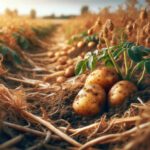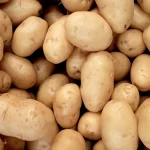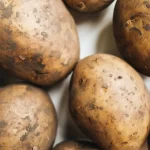Introduction to Potato Cultivation
Potato cultivation is one of the most important globally due to its versatility and nutritional value. Proper management is essential to maximize yield and the quality of the final product. In this guide, we will explore the essential practices for efficient potato crop management, from variety selection to pest and disease control.
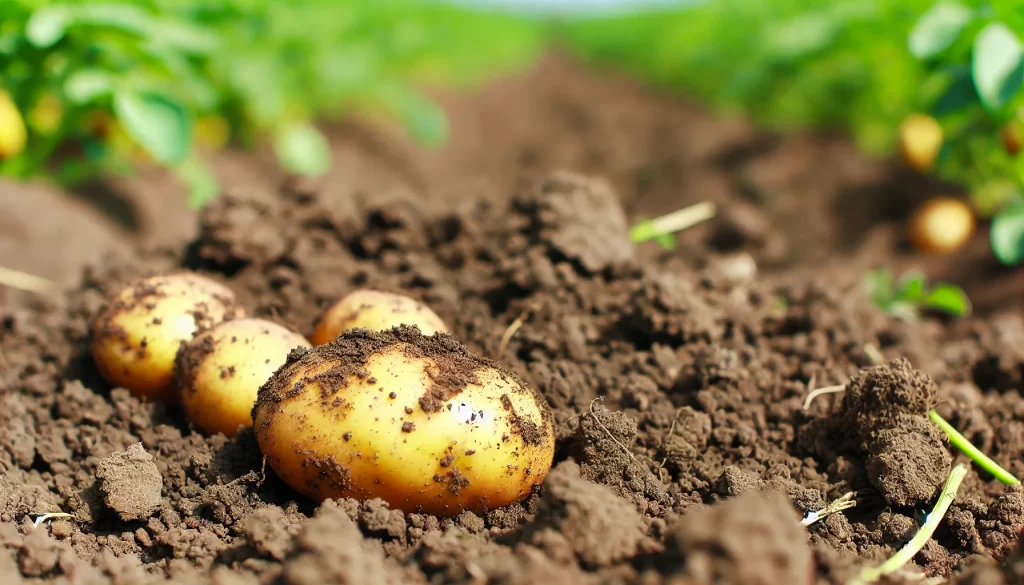
Potato Variety Selection
Factors to Consider in Variety Selection
Choosing the right potato variety is crucial for the success of the crop. Farmers should consider factors such as:
- Climate: Some varieties are better suited to cold climates, while others thrive in temperate climates.
- Disease Resistance: Select varieties that are resistant to common diseases in the region.
- Purpose of Use: Determine if the potatoes will be grown for fresh consumption, processing, or storage.
Main Potato Varieties
Some of the most recommended varieties include:
- Monalisa: Ideal for temperate climates and resistant to certain diseases.
- Kennebec: Popular for processing due to its high starch content.
- Rudolph: Resistant to late blight and suitable for humid areas.
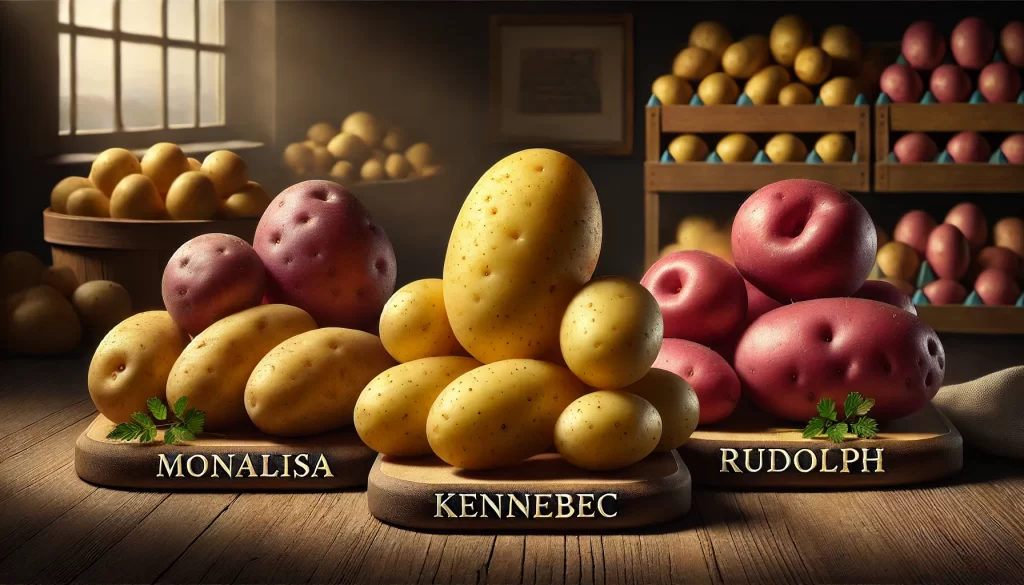
Soil Preparation for Potato Cultivation
Soil Analysis and Preparation
Soil plays a vital role in the yield of potato crops. Key steps in soil preparation include:
- Soil Analysis: Evaluate soil nutrient levels and pH to determine fertilization needs.
- Tillage: Perform deep tillage to ensure good drainage and soil aeration.
- pH Adjustment: Adjust soil pH to an optimal range of 5.5 to 7.0, using agricultural lime if necessary.
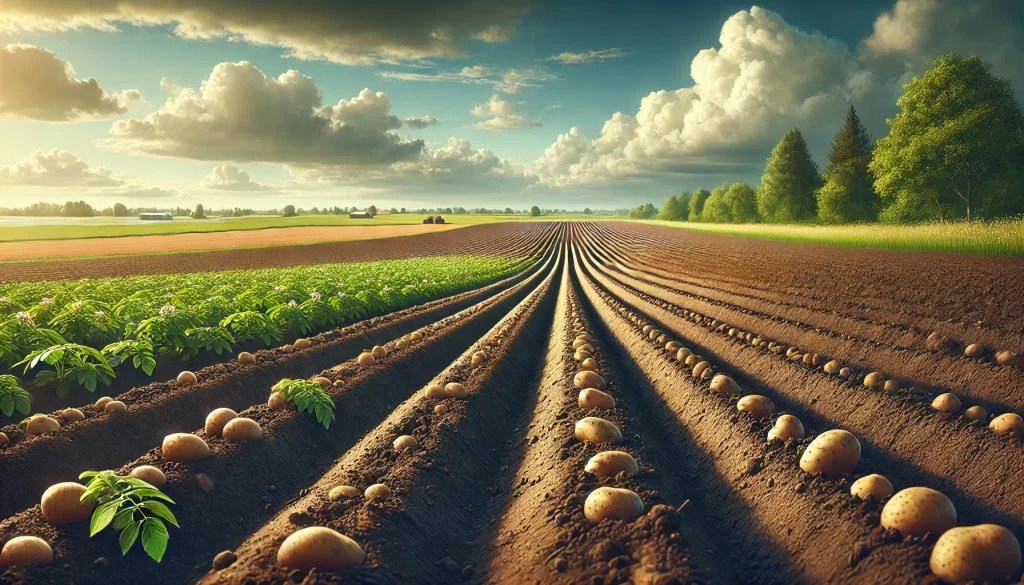
Soil Fertilization
Proper fertilization is essential for good potato development. The main nutrients include:
- Nitrogen (N): Promotes vegetative growth.
- Phosphorus (P): Important for root and tuber development.
- Potassium (K): Improves tuber quality and size.
Potato Planting
Seed Preparation
The quality of the seed material is crucial for the success of the crop. Key steps include:
- Seed Selection: Use certified disease-free tubers.
- Cutting Tubers: If necessary, cut tubers into pieces with at least two eyes, allowing them to heal before planting.

Planting Techniques
Planting techniques vary depending on the region and local practices. The most common are:
- Ridge Planting: Facilitates drainage and reduces the risk of disease.
- Spacing: Maintain a distance of 30 to 40 cm between plants and 70 to 90 cm between rows to allow good tuber development.
Irrigation Management in Potato Cultivation
Water Needs of Potatoes
Proper irrigation is essential to avoid water stress and ensure good growth. The critical stages that require precise irrigation are:
- Emergence: Light irrigation to support seedling emergence.
- Tuber Formation: Moderate irrigation to support tuber development.
- Maturation: Reduced irrigation to avoid excess moisture at harvest.
Recommended Irrigation Systems
The most efficient irrigation systems for potato cultivation include:
- Drip Irrigation: Provides a constant water supply and avoids waterlogging.
- Sprinkler Irrigation: Useful in water-scarce regions but must be controlled to avoid fungal diseases.
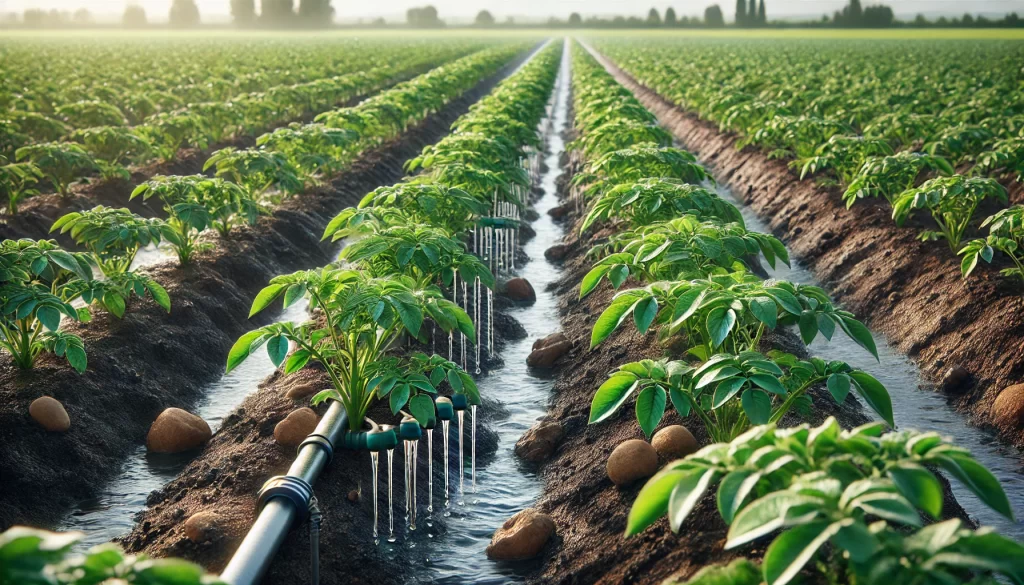
Pest and Disease Control in Potatoes
Common Pests in Potato Cultivation
Pests can cause severe damage to potato crops. The most common include:
- Wireworm: Feeds on tubers, causing perforations and reducing quality.
- Potato Beetle: Attacks the leaves and can defoliate the plant if not controlled.
Common Diseases
The most common diseases affecting potato crops include:
- Late Blight: Caused by the fungus Phytophthora infestans, it can destroy entire crops if not managed properly.
- Common Scab: Caused by bacteria that cause lesions on the surface of tubers.
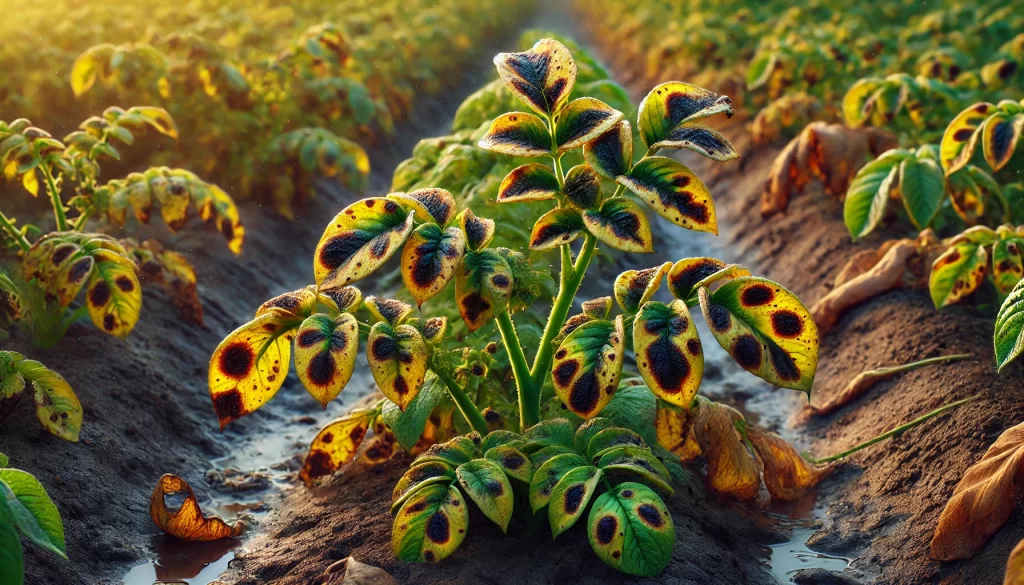
Integrated Control Strategies
For effective pest and disease management, it is recommended to use an Integrated Pest Management (IPM) approach, which includes:
- Crop Rotation: Avoid planting potatoes in the same location for several consecutive years.
- Biological Control: Use natural enemies of pests to reduce their population.
- Fungicide/Insecticide Application: Use chemical products responsibly, following technical recommendations.
Potato Harvest and Post-Harvest
Maturity Indicators
Harvest should be done when the tubers have reached full maturity. Maturity indicators include:
- Yellowing of Leaves: Sign that tubers have stopped growing.
- Firm Skin: Tubers should have firm skin and should not easily peel off when rubbed.
Harvest Techniques
Harvesting techniques depend on the size of the crop and the tools available:
- Manual Harvesting: Suitable for small plots, ensuring careful handling of the tubers.
- Mechanized Harvesting: Recommended for large areas, using harvesters that minimize tuber damage.
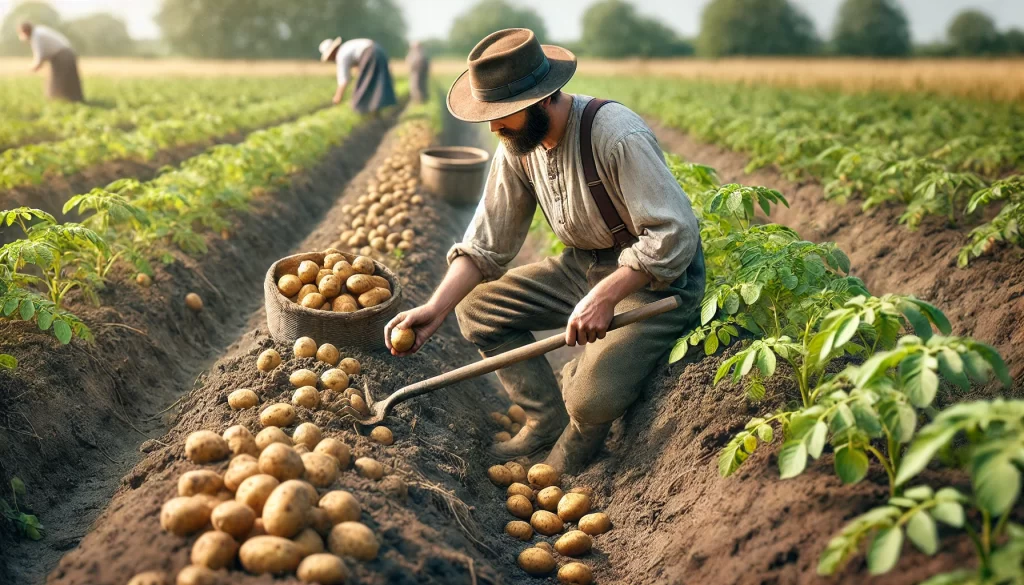
Post-Harvest Handling
Proper post-harvest handling is crucial to avoid losses. Recommended practices include:
- Curing: Leave the tubers in a dry, dark place for 10 to 14 days to heal surface wounds.
- Storage: Store tubers in controlled temperature and humidity conditions to prevent sprouting and rotting.

 AgronoBlog – Agriculture Blog
AgronoBlog – Agriculture Blog 